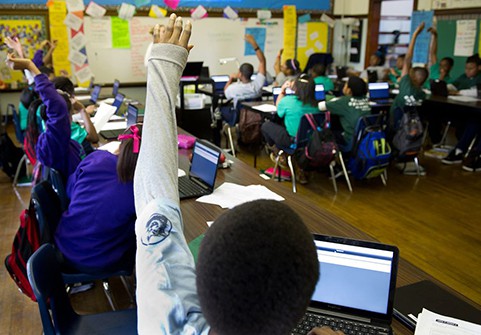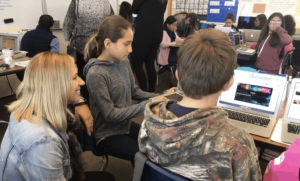10 Powerful Project-Based Learning Engagement Strategies

Student engagement is key to motivation, persistence, and deeper learning. That’s why leading school networks including New Tech Network, Expeditionary Learning, and Big Picture Learning are project-based.
I recently outlined 22 instincts that motivate a commitment of time and energy. Ten of these strategies are widely used to promote powerful project-based learning experiences.
- Challenge. A well constructed project promotes critical thinking and engagement. Michael Corneau, principal of Florida’s Stevenson Elementary School guided his teachers in developing rigorous and relevant standards-based tasks. He attributes Literacy Design Collaborative with igniting the passion for teaching at Stevenson and helping teachers to “focus on a more deliberate set of practices that help students to take greater ownership of their learning through more engaging work that is much more collaborative in nature.”
- Craftsmanship. The desire to develop a quality product, driven by a mixture of intrinsic and extrinsic factors, can encourage engagement. The best example of quality high school work that I’ve seen are the publications are from the Journalism Program at Palo Alto High and the projects at High Tech High. Lindsey Own described 16 cool maker projects that promote curiosity and craftsmanship.
- Contribution. The opportunity to create something of value, beauty and importance for the world can be captivating. Ron Berger, Expeditionary Learning, noted that the act of production can yield a combination of craftsmanship (#2) and contribution. (Watch Ron Berger’s famous Austin’s butterfly video.)
- Authentic. John Larmer, Buck Institute, stresses the importance of real and authentic work, “Work has a direct impact on or use in the real world.” That suggests work focused on real problems, producing real products of real value, for real audiences. Bob Lenz, Buck Institute, said, “Fostering curiosity through inquiry and allowing students to choose their topic or product has proven to make a difference in motivation.”
- Curiosity. Projects where students can pick the topic can leverage curiosity. That’s why I’m a big fan of science fairs. Every student should have some time to go deep on a topic of interest every year. NCTAF Learning Studios combine PBL with professional learning community and outside content experts (PBL+PLC+OCE) to support year long challenge based investigations.
- Reflection. Periodic reflection builds appreciation for progress made. Combining a project portfolio with student led conferences builds engagement and ownership.
- Agency. The ability to control some context variables, to direct one’s own experience, develops a sense of ownership and can be highly motivating through challenge growth progressions. Real voice and choice can be highly motivating.
- Collaboration. Encouraging two or more people to build or learn something together can boost engagement by creating a shared goal. Amber Chandler uses team debate to explore different perspectives on tough issues. Projects are one of the best ways to prepare young people for a diverse project-based world of work.
- Teaching. Extending one’s self to support the growth of another (Scott Peck’s definition of love) can be highly rewarding. Teaching, modeling, and coaching have the side benefit of reinforce learning and developing a more robust mental model. Teacher Justin Wells has students model Bill Nye and write a science paper, make a video, and teach a lesson. Peer-to-peer tutoring is an important part of the model at Summit Public Schools.
- Feedback. Ron Berger, Expeditionary Learning, advocates for continuous assessment in a project-based environment. Many teachers consider the final product to be a sufficient form of assessment, but Berger says, “if the teacher isn’t assessing all along the way then the final product will not typically show the high quality of success.” He explains, “You don’t want to undermine the quality of the final product by taking away the scaffolding, but you want a sense of individual student levels of understanding throughout that flow.” Ron suggests building in smaller assessments, in some cases on demand assessments, at multiple times before the final project, “Don’t wait; check along the way.”
Alan Gershenfeld, E-Line Media said that once an individual is initially engaged and starting to make progress, the quality and timing of the feedback can be the difference in whether someone stays engaged or not.
For more, check out:





Joetta Schneider
Wonderful article, Tom. Thank you for these ten great tips!